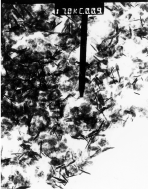Abstract
Nanosized needles of ScO(OH) and lozenge shaped platelets of γ-ScO(OH) were prepared by hydrothermal syntheses (200 °C, 10 h) using ScCl3·6H2O as starting material. The influence of hydrothermal conditions on the nature of the phase, the morphology and the particle size was investigated. Characterization was achieved by


 Please wait while we load your content...
Please wait while we load your content...